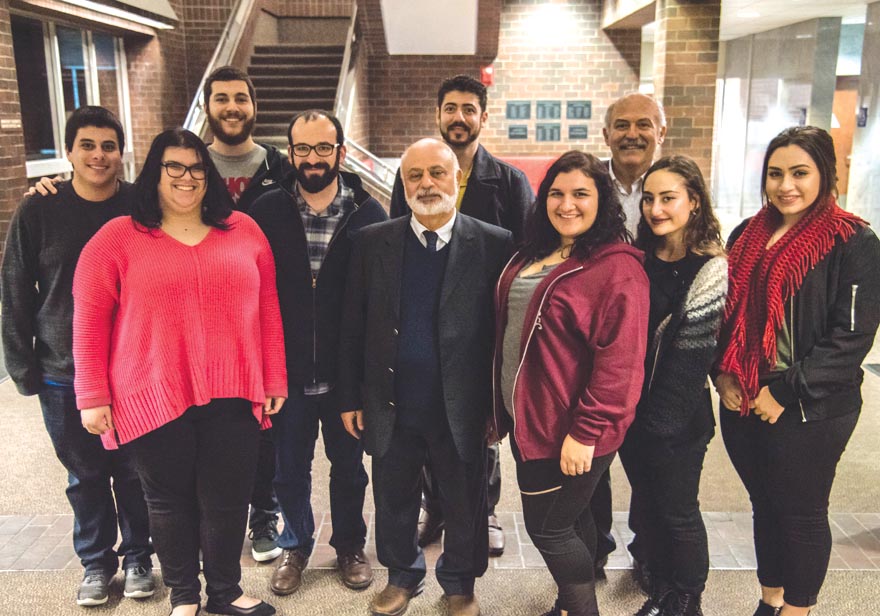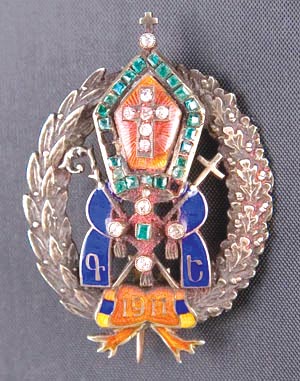
Photo: Hourig Attarian
David Safrazian
Staff Writer
Phaleristics, the study of awards, orders, and medals, is a bourgeoning area of research. Guest speaker Nika Babayan gave an in-depth look into this understudied topic in his presentation “Awards of Armenia and the Armenian Church” on Friday, January 19 at Fresno State. His presentation was the first in the Armenian Studies Program Spring Lecture Series.
During his talk, Babayan discussed two books that he has authored on the topic: Awards of Armenia (2011) and Awards of the Armenian Church (2016).
Armenian awards have been given out since the 17th century to those who have made significant contributions to the Church, Armenia, or the Diaspora. These awards can today be divided into three categories: Awards of the Armenian Church (Armenian Apostolic, Armenian Catholic, and Armenian Protestant), Awards of Armenia (The First Republic of Armenia, Soviet Armenia, the Republic of Armenia, and Karabagh), and Awards of the Armenia Diaspora.
One of the first orders Holy Etchmiadzin instituted in 1918 was the “St. Gregory the Illuminator (Lusavorich)” and was given to both clergy and laymen. This order paved the way for an establishment of an elaborate award system.

Seventy St. Grigor the Illuminator orders have been awarded since 1918, but only six of these medals are known to be in existence today. General Andranik and Calouste Gulbenkian are among the famous awardees of the order. The Nersess Shnorali award, a division of the St. Gregory medal, has only been given to five individuals since 2011, mainly to artists, scientists, notable authors, and benefactors of Armenia and the Armenian Church.
Babayan’s book, Awards of the Armenian Church, also discusses “Wedding Medals” of Etchmiadzin, made of gold or silver, which were given out in the 19th century. They were modeled after medals first given in Holland to newly married couples. No more than twenty of these medals are known to survive today.
His Holiness Vazgen I became Catholicos of All Armenians in 1955 and by 1978 he had significantly changed the award system of Holy Etchmiadzin, by creating new awards that were more selective. The new Catholicos also banned the awards given out by his predecessor Catholicos George V because His Holiness Vazgen I wanted the awards to be focused on those given out in Etchmiadzin rather than in the Diaspora.
Armenian awards and medals are now considered as collectibles and there is a unique award established in 1991, called the “Badge of the Silver Star of Armenia,” which is today worth more than $80,000.
The awarding system of the First Republic of Armenia (1918-1920), included an award for “Service to Motherland” that was made of gold and precious stones, such as rubies and diamonds, by a British jeweler.
Babayan is a graduate of Yerevan State University and has extensive experience in the cultural and musical fields in the Republic of Armenia. He is currently the general manager of the Cadence Music Center and previously was the general manager of the State Philharmonic Orchestra of Armenia.
Babayan, in addition to re-searching the awards, is a collector himself. His work allows one to more fully understand why the awards were developed and who received them.
The audience was intrigued and interested in the many types of awards and their history. Although many individuals work hard for the benefit of the Church and Armenia, they do so expecting nothing in return. When they do receive an award, they know they truly deserve it.
Babayan’s presentation em-phasized how important the medals and awards are for an understanding of Armenian history.
 Hye Sharzhoom Armenian Action
Hye Sharzhoom Armenian Action